As we delve into the world of sandwich grill plants, it’s fascinating to observe the dynamic shifts and emerging trends within the European and American markets. From the relentless pursuit of convenience to the ever-evolving culinary landscape, the sandwich grill industry is witnessing a transformation that is reshaping consumer preferences and business strategies alike. Let’s take a closer look at what’s brewing in these two prominent markets.
MarketOverviewofSandwichGrillPlants
The sandwich grill plant market has experienced a surge in popularity, driven by the increasing demand for convenience and variety in the foodservice industry. As consumers seek out quick and delicious meal options, sandwich grills have become a staple in many fast-casual restaurants and foodservice establishments.
Grill plants come in various sizes and configurations, from compact countertop models to large-scale, continuous operation systems that cater to high-volume production needs. These plants are designed to cook sandwiches, burgers, and other grilled foods efficiently and consistently, ensuring that the output meets the stringent quality standards expected in the foodservice industry.
In the European market, sandwich grill plants have found a significant niche, particularly in countries like Germany, France, and the UK. The European consumer’s preference for fresh, high-quality, and customizable meals has propelled the growth of these grills. Fast-casual restaurants, cafes, and canteens have been quick to adopt these systems to enhance their menu offerings and appeal to health-conscious diners.
The European sandwich grill market is characterized by a strong focus on innovation. Manufacturers are constantly pushing the boundaries of design and technology to offer features such as programmable cooking settings, adjustable heat controls, and easy-to-clean surfaces. These innovations not only improve the efficiency of the grill but also enhance the overall dining experience by providing consistent and customized cooking results.
In the Americas, the sandwich grill market has a slightly different dynamic. The United States, in particular, has seen a surge in gourmet fast-casual concepts that emphasize the importance of quality ingredients and authentic flavors. This has created a ripe environment for high-quality sandwich grill plants that can handle the demands of these upscale fast-casual restaurants.
The American market is also marked by a diverse range of grill models, from traditional flat-top grills to modern induction systems that provide precise temperature control. These grills are not only used in foodservice establishments but also in home kitchens, where consumers are increasingly interested in replicating the café experience at home.
Continuous operation sandwich grill plants are a particular segment of the market that has seen significant growth. These plants are designed to run non-stop, ensuring that high-volume production is met without compromising on quality. The key benefits of these systems include:
- Increased productivity: Continuous operation grills can produce a large number of sandwiches per hour, making them ideal for establishments with high customer turnover.
- Consistency: The ability to maintain a consistent cooking temperature and time ensures that every sandwich meets the quality standards expected by the customer.
- Hygiene: The design of these plants often includes features that promote easy cleaning and maintain hygiene, which is crucial in the foodservice industry.
Technological advancements have also played a crucial role in the development of continuous operation sandwich grill plants. Modern grills now come with features such as digital temperature control, programmable recipes, and automated cleaning cycles. These features not only enhance the operational efficiency of the grill but also reduce the need for manual intervention, freeing up staff to focus on other aspects of the business.
Market segmentation in the sandwich grill industry is diverse, ranging from small countertop units used in individual stalls to large-scale industrial plants that supply entire foodservice chains. The end-users of these grills vary widely, from independent cafes to global fast-food franchises, each with their own specific requirements and expectations.
The competitive landscape is robust, with several well-established manufacturers and numerous smaller players vying for market share. These companies differentiate themselves through innovation, quality, and customer service. As the market continues to evolve, manufacturers are increasingly focusing on sustainability and energy efficiency, offering eco-friendly options that align with the broader environmental concerns of the industry.
The regulatory environment also plays a significant role in shaping the sandwich grill market. Both Europe and the Americas have stringent food safety regulations that manufacturers must comply with. This not only ensures consumer safety but also adds to the complexity of the market, requiring manufacturers to stay abreast of changes and adapt their products accordingly.
In conclusion, the sandwich grill plant market is dynamic and ever-evolving, driven by consumer demand for convenience, quality, and customization. Continuous operation grills have become a key component in the foodservice industry, offering a solution that combines efficiency with high-quality output. As the market continues to grow, manufacturers will need to innovate and adapt to meet the changing needs of their customers while maintaining compliance with stringent regulatory standards.
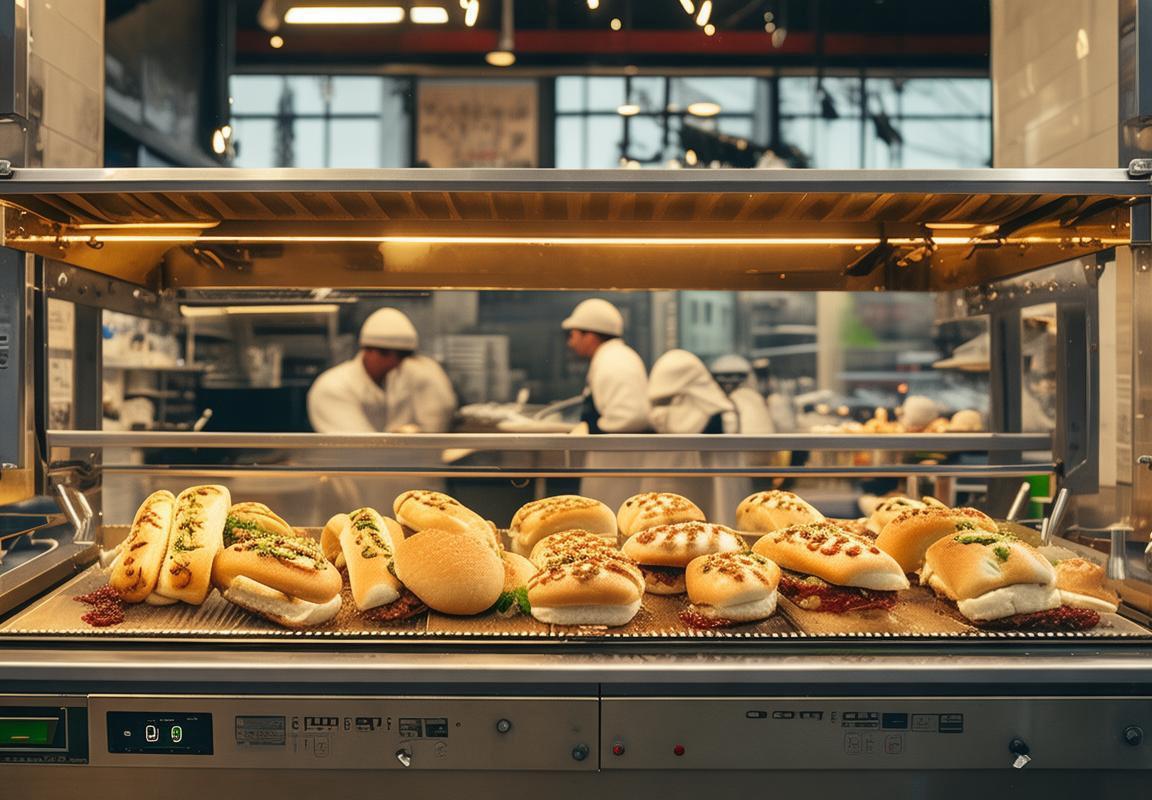
EuropeanMarketDynamics
The European sandwich grill market has witnessed a remarkable evolution, driven by changing consumer preferences and the rise of fast-casual dining. This dynamic sector is characterized by a blend of traditional and innovative approaches to sandwich preparation. One key trend is the increasing demand for healthier, gourmet sandwiches, which has spurred the development of high-quality, efficient sandwich grill plants.
In recent years, there has been a noticeable shift towards the use of fresh, locally sourced ingredients, reflecting a growing emphasis on sustainability and food provenance. This has led to a surge in the popularity of artisanal sandwich shops and cafes, each vying to offer unique, high-quality sandwiches. As a result, sandwich grill plants in Europe are now more focused on flexibility and customization to cater to these diverse preferences.
The market is also seeing a rise in the adoption of advanced cooking technologies, such as induction heating and smart grilling systems, which not only improve the quality of the final product but also enhance operational efficiency. These technologies allow for precise temperature control and faster cooking times, which are crucial for maintaining a high service level in the fast-paced European foodservice industry.
Moreover, the European sandwich grill market is highly competitive, with a multitude of local and international brands vying for market share. Key players are investing heavily in research and development to create unique products that stand out in a crowded market. This competition has led to a constant stream of new product launches, each promising to offer something different to the consumer.
The demand for convenience is another driving force in the European market. With long working hours and a busy lifestyle, consumers are increasingly seeking quick and satisfying meal options. This has spurred the growth of sandwich shops in urban areas, where continuous operation sandwich grill plants are essential to meet the high demand for on-the-go meals.
One cannot overlook the role of health consciousness in shaping the European sandwich grill market. There is a growing trend towards healthier eating, with consumers looking for sandwiches that are lower in fat, sugar, and calories. This has prompted manufacturers to develop a range of low-carb, gluten-free, and vegetarian options, which are now staple offerings in many sandwich grill plants.
The European market is also influenced by cultural diversity, with a variety of ethnic sandwich styles gaining popularity. From Italian panini to French baguettes, and even traditional British sandwiches, the market is rich with options that cater to different tastes and cultural backgrounds. This diversity has created a vibrant and dynamic landscape for sandwich grill plants, which must be adaptable to these varied preferences.
In terms of distribution, the European sandwich grill market is well-serviced by a network of suppliers and distributors who ensure that raw materials and finished products reach the market efficiently. This distribution network is crucial for the continuous operation of sandwich grill plants, as timely delivery is essential to maintain a steady flow of products.
Finally, the European sandwich grill market is subject to various regulatory requirements, including food safety standards and labeling regulations. These regulations must be strictly adhered to by all players in the market, which can sometimes add complexity to the operations of sandwich grill plants. Despite these challenges, the market remains robust, with a strong focus on innovation and quality, ensuring that it continues to grow and evolve.
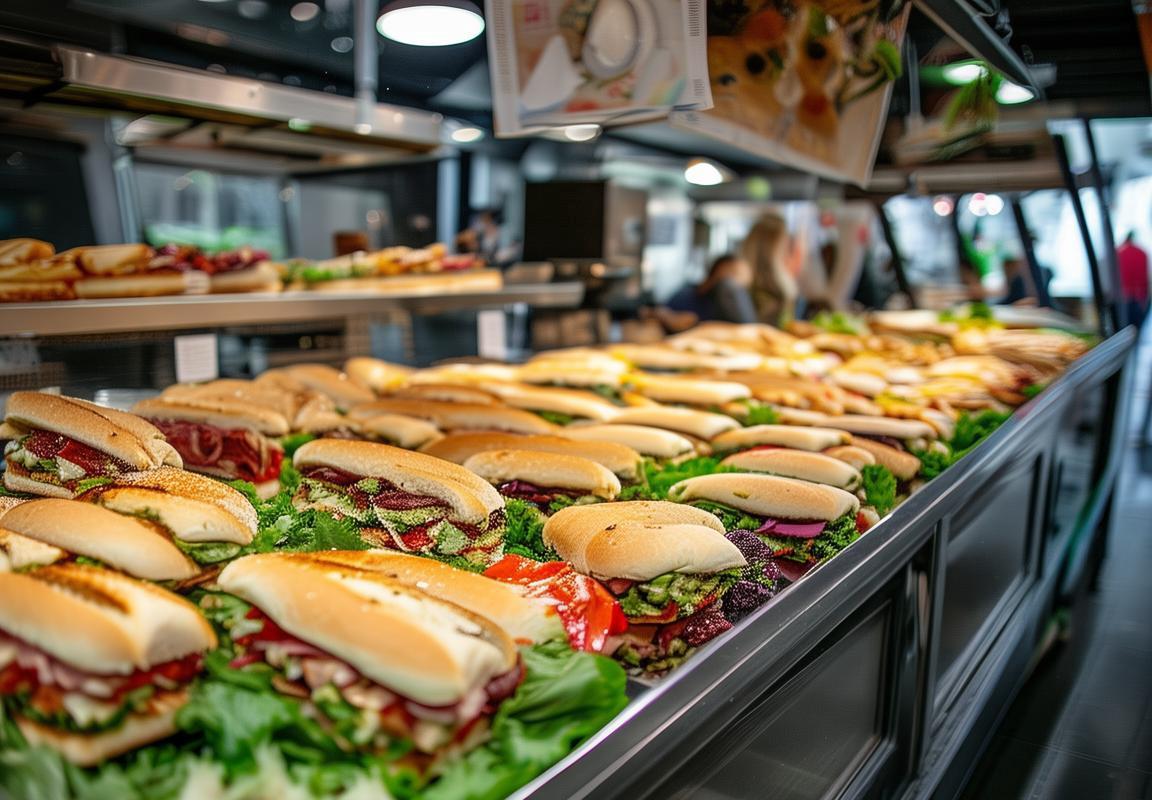
AmericanMarketTrends
The American market for sandwich grills has seen a surge in popularity, driven by both convenience and culinary trends. Consumers are increasingly seeking quick and delicious meals, and sandwich grills have emerged as a key player in this fast-paced landscape.
Sandwich shops and food trucks have become a staple on the streets of America, offering a variety of grab-and-go options. These establishments often rely on sandwich grills to produce high-quality sandwiches efficiently. The demand for these grills has been on the rise, with operators looking for reliable and versatile equipment that can handle the demands of high-volume production.
One notable trend in the American market is the emphasis on health and wellness. Consumers are more conscious of what they’re eating, and this has influenced the types of sandwiches being grilled. Many establishments are offering gluten-free, low-carb, and plant-based options, which require specialized grills that can accommodate these dietary preferences without compromising on taste or texture.
The integration of technology into sandwich grills is another significant trend. Smart grills with digital controls and programmable settings are becoming increasingly popular. These features allow operators to maintain consistent temperatures and cooking times, ensuring that every sandwich is cooked to perfection. The ability to customize cooking profiles for different types of bread and fillings is a game-changer for sandwich shops looking to offer a wide range of menu items.
Regional variations play a crucial role in shaping the American sandwich grill market. For instance, in the Midwest, there’s a strong preference for hearty sandwiches, often featuring bacon, cheese, and other indulgent toppings. In contrast, the coastal regions tend to lean towards lighter, seafood-inspired sandwiches. This diversity in preferences means that sandwich grill manufacturers must cater to a wide array of tastes and cooking requirements.
The rise of gourmet and artisanal food has also had a significant impact on the American sandwich grill market. High-end sandwich shops are now incorporating premium ingredients and unique flavors into their offerings, pushing the boundaries of what a sandwich can be. This has led to the development of high-quality, professional-grade grills that can handle the demands of these sophisticated recipes.
Another trend worth mentioning is the growing popularity of outdoor dining experiences. With the increasing focus on outdoor living, many restaurants and cafes are setting up patios and outdoor kitchens. Sandwich grills are perfect for these settings, providing a versatile cooking solution that can be used to prepare a variety of foods, not just sandwiches.
The American market for sandwich grills is also influenced by the rise of social media and food influencers. These platforms have played a significant role in promoting new sandwich concepts and driving consumer interest. As a result, sandwich grill manufacturers are not only focusing on the technical aspects of their products but also on the aesthetic appeal and brand storytelling.
In terms of competition, the American sandwich grill market is quite diverse, with numerous manufacturers offering a wide range of products. Some are known for their high-end, commercial-grade grills, while others specialize in more compact, consumer-grade models. The competition is fierce, but it also drives innovation and improvements in product design and functionality.
Lastly, the American market for sandwich grills is poised for continued growth. As the demand for convenience and quality continues to rise, and as new culinary trends emerge, the market is expected to expand further. The key to success for manufacturers will be to stay ahead of these trends, offering products that meet the evolving needs of both operators and consumers.
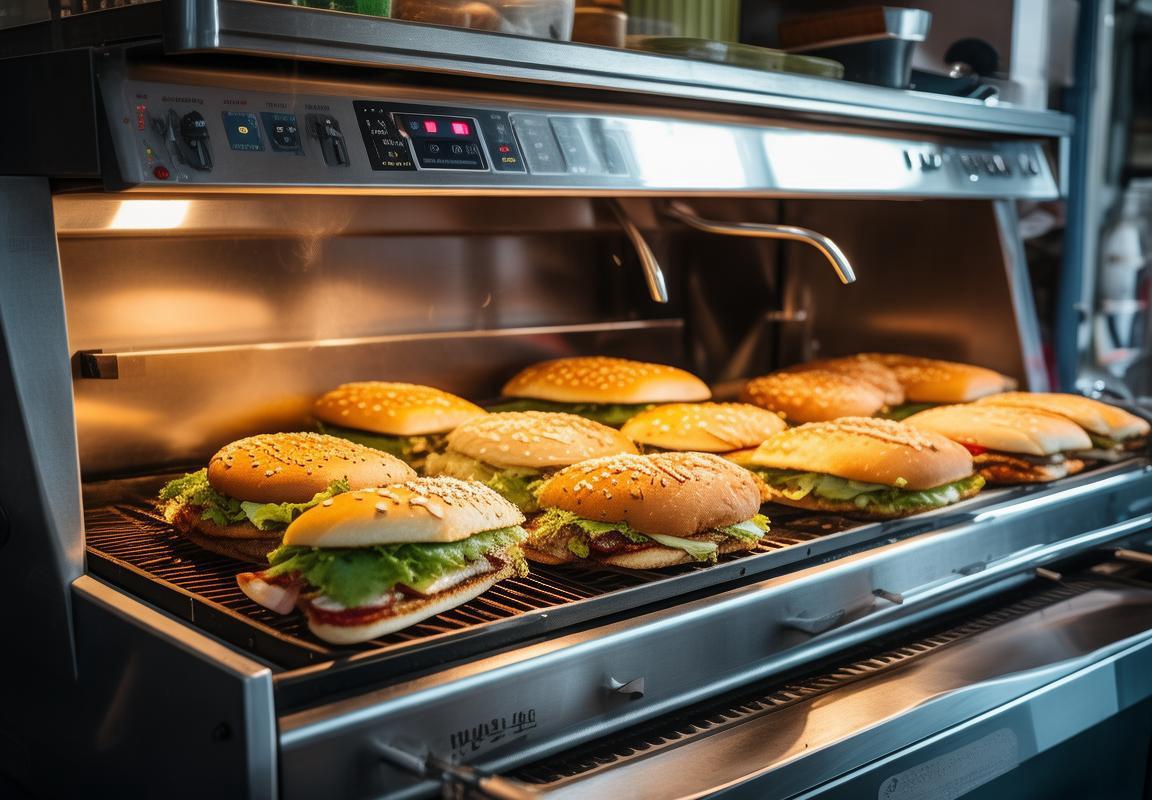
ContinuousOperationCapabilities
Continuous operation sandwich grill plants are designed to cater to the demands of high-volume production environments, where efficiency and reliability are paramount. These facilities are engineered to run seamlessly around the clock, ensuring a consistent supply of grilled sandwiches. Here’s an in-depth look at the capabilities that make these plants stand out:
Robust Design for Uninterrupted PerformanceThe core of a continuous operation sandwich grill plant lies in its robust design. These plants are constructed with heavy-duty components that can withstand constant use. From the grill surfaces to the conveyor systems, every part is built to endure around-the-clock operation without the risk of failure.
Advanced Conveyor SystemsConveyor belts are the lifeblood of these plants. They are engineered to move sandwiches at a steady pace, ensuring that the production line never stalls. These systems are often equipped with sensors and adjustable speeds to accommodate different types of sandwiches and maintain a consistent flow.
High-Temperature Grilling SurfacesThe grilling surfaces in continuous operation plants are typically made from heat-resistant materials that can maintain high temperatures for extended periods. These surfaces are designed to evenly distribute heat, ensuring that each sandwich is cooked to perfection with minimal variance in quality.
Automated Ingredient PlacementTo keep the line moving, these plants often feature automated systems for placing ingredients onto the sandwiches. Precision feeders and depositors ensure that the right amount of each component is added, reducing the risk of human error and increasing efficiency.
Modular and Scalable DesignA key advantage of continuous operation sandwich grill plants is their modular nature. This allows for easy expansion or modification as the market demand shifts. Whether a plant needs to increase its capacity or add new features, the modular design makes it a flexible solution.
Energy Efficiency and SustainabilityThese plants are not just about high output; they also focus on energy efficiency. Advanced insulation and heating systems help to reduce energy consumption, while also maintaining the necessary temperatures for grilling. This focus on sustainability is becoming increasingly important as businesses look to minimize their environmental footprint.
Smart Monitoring and Control SystemsThe heart of any continuous operation sandwich grill plant is its monitoring and control systems. These systems provide real-time data on the plant’s performance, allowing for immediate adjustments if any issues arise. Predictive maintenance features also help to prevent downtime by identifying potential problems before they occur.
Sanitation and HygieneGiven the nature of food production, maintaining high levels of sanitation is crucial. Continuous operation sandwich grill plants are designed with easy-to-clean surfaces and are often equipped with automated cleaning systems to ensure that the production area remains hygienic at all times.
Customization and FlexibilityWhile the core capabilities of these plants are designed for high-volume production, they also offer customization. Plants can be tailored to specific product lines, allowing for a wide range of sandwich variations. This flexibility is particularly valuable in markets where consumer preferences are diverse and ever-changing.
Integration with Packaging LinesTo maximize efficiency, continuous operation sandwich grill plants are often integrated with packaging lines. This integration ensures that once a sandwich is grilled and ready, it can be quickly and safely packaged for storage or distribution.
Training and SupportThe success of a continuous operation sandwich grill plant also depends on the training and support provided to the staff. Operators need to be well-versed in the plant’s operation, maintenance, and safety protocols to ensure optimal performance.
Continuous ImprovementLastly, the continuous operation capabilities of these plants are not static. Manufacturers and operators are constantly seeking ways to improve efficiency, reduce costs, and enhance the quality of the end product through innovation and process optimization.
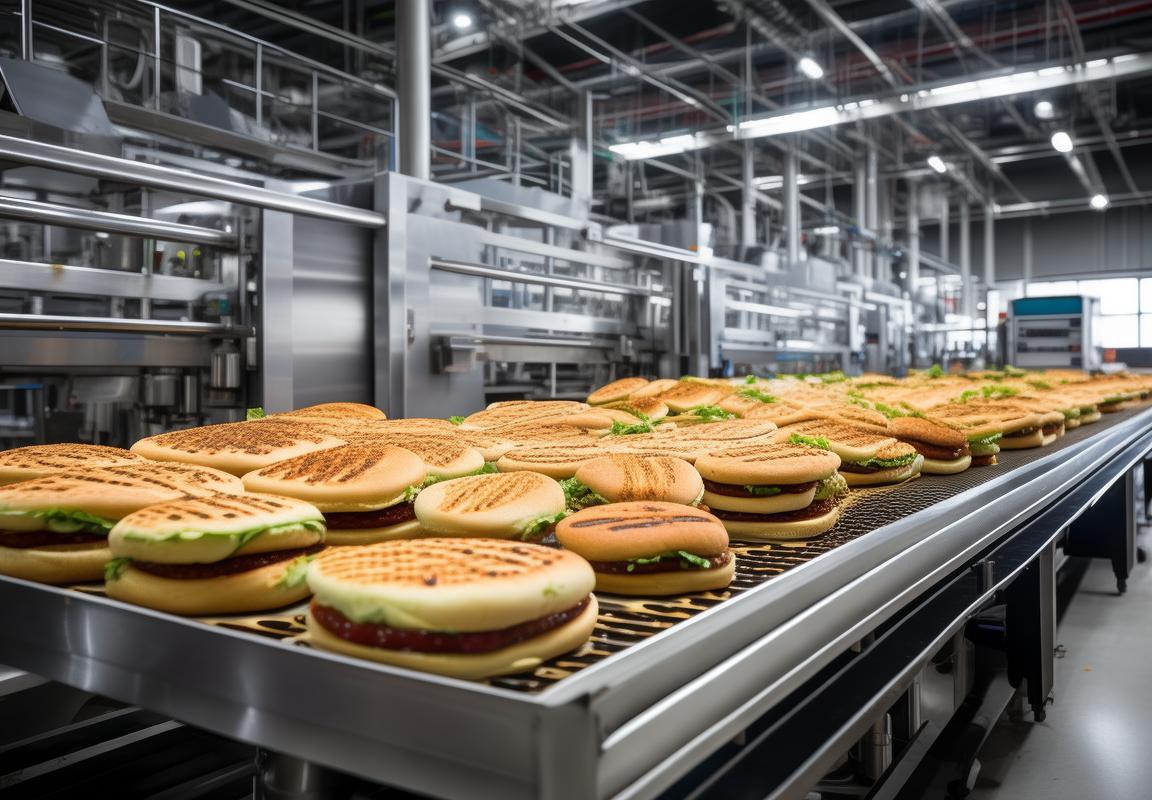
TechnologicalInnovations
In the world of kitchen appliances, technological innovations have been reshaping the landscape, especially in the realm of continuous operation sandwich grill plants. These advancements not only enhance efficiency but also elevate the quality and consistency of the final product. Here’s a glimpse into some of the latest technological breakthroughs:
-
Smart Automation SystemsModern sandwich grill plants are equipped with sophisticated automation systems that streamline production processes. These systems can manage multiple tasks simultaneously, from loading raw ingredients to adjusting cooking temperatures, ensuring a seamless and efficient workflow.
-
Advanced Heat ManagementHeat distribution is crucial in sandwich grilling, as it affects the texture and flavor of the final product. Newer technologies incorporate advanced heat management systems that provide precise temperature control, reducing the risk of overcooking and undercooking while optimizing energy usage.
-
Modular Design for FlexibilityThe modular design of modern sandwich grill plants allows for easy scalability and customization. This means that as market demands change, manufacturers can reconfigure their plants to produce different types of sandwiches, burgers, or other grilled items without extensive downtime or investment.
-
Enhanced Food Safety FeaturesFood safety is paramount in the food industry, and continuous operation sandwich grill plants are incorporating new features to ensure the highest standards. These include automated cleaning systems that sanitize surfaces and equipment, reducing the risk of cross-contamination.
-
Energy Efficiency ImprovementsWith environmental concerns on the rise, energy efficiency has become a key focus in the design of sandwich grill plants. Innovations like heat recovery systems and energy-saving ovens have significantly reduced the carbon footprint of these facilities.
-
User-Friendly InterfaceThe user interface of modern sandwich grill plants has been revolutionized to be more intuitive and user-friendly. Operators can easily navigate through various settings and programs, minimizing the learning curve and increasing overall productivity.
-
Integrated Data AnalyticsData analytics has become an integral part of the sandwich grill manufacturing process. By integrating sensors and data collection systems, plants can gather valuable insights into production patterns, energy consumption, and product quality, leading to continuous improvement.
-
Smart Material InnovationsMaterials used in sandwich grill plants are also advancing. From non-stick surfaces that reduce the need for oil to innovative coatings that improve heat transfer, these materials contribute to a more efficient and sustainable production environment.
-
Customizable Cooking ProgramsModern plants offer customizable cooking programs that can be tailored to specific types of food products. This allows for a high degree of control over the cooking process, ensuring consistent results across different batches.
-
Connectivity and Remote MonitoringThe ability to connect sandwich grill plants to the internet has opened up new possibilities for remote monitoring and control. Operators can now manage production from anywhere, receiving real-time updates and alerts, which is particularly beneficial for large-scale operations with multiple locations.
These technological innovations represent a significant leap forward in the continuous operation sandwich grill plant industry. They not only improve the efficiency and profitability of the manufacturing process but also enhance the quality and safety of the end product, ultimately contributing to the satisfaction of consumers worldwide.
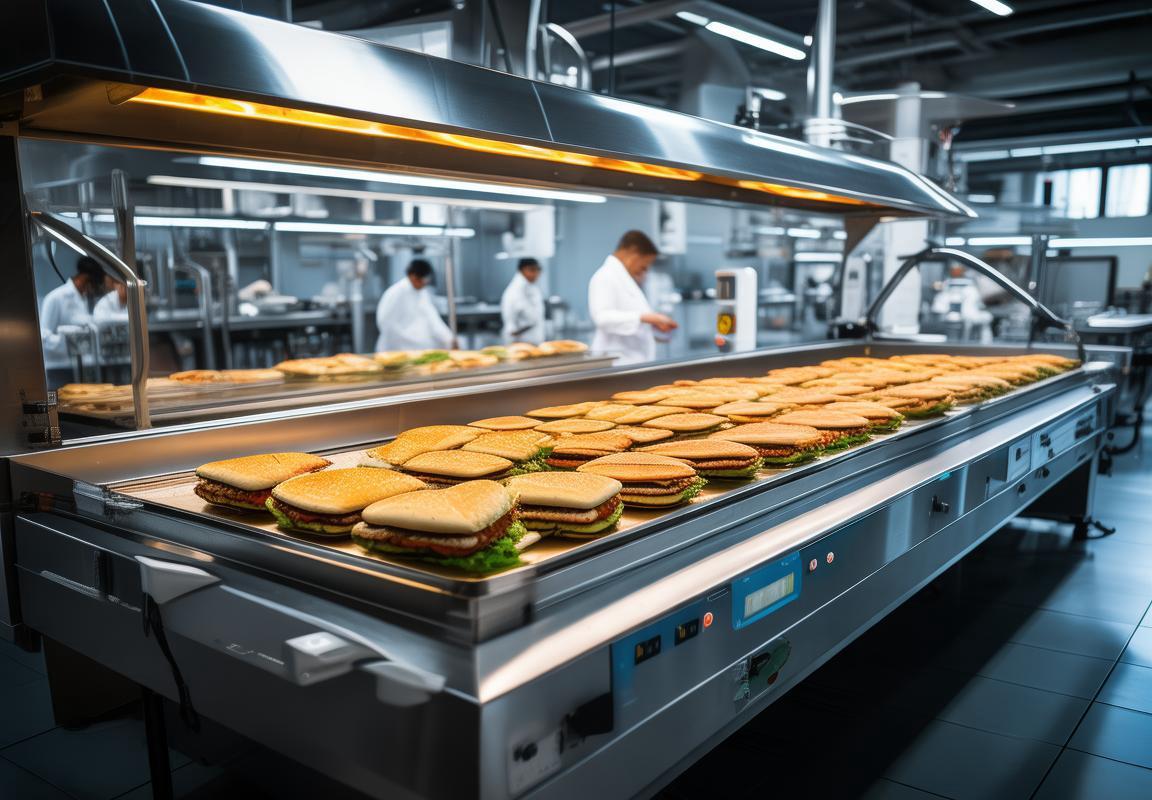
MarketSegmentation
In the dynamic landscape of the sandwich grill market, segmentation plays a crucial role in understanding consumer needs and preferences. This division allows manufacturers and distributors to tailor their products and marketing strategies to specific groups. Here’s a closer look at the various segments that define the market:
-
Consumer TypeThe market is segmented based on consumer type, which includes both residential and commercial users. Residential consumers typically purchase smaller, countertop models for personal use, while commercial users, such as restaurants and catering services, require larger, more robust units designed for high-volume production.
-
Product TypeSandwich grills come in a variety of designs and functionalities. The market segmentation by product type includes:
-
Single-Sided Grills: Ideal for home use or smaller food service operations, these grills cook sandwiches on one side.
-
Double-Sided Grills: Suitable for both residential and commercial settings, these units can cook sandwiches on both sides simultaneously.
-
Conveyor Grills: Designed for continuous operation, conveyor grills are commonly found in high-volume commercial kitchens.
-
Rotisserie Grills: Specialized for cooking sandwiches on a spit, these grills offer a unique cooking method that can enhance flavor.
- Cooking TechnologyThe market is also segmented based on the cooking technology used in sandwich grills:
-
Conduction Grills: Heat is transferred through metal surfaces, which is the most common method in countertop models.
-
Convection Grills: Utilize fans to circulate hot air around the food, providing an even cook and reducing cooking times.
-
Infrared Grills: Use infrared technology to cook food quickly and efficiently, often resulting in a crispier crust.
-
Combination Grills: Combine multiple cooking methods, such as conduction and convection, to offer versatility and control.
- Size and CapacitySandwich grill market segmentation also considers the size and capacity of the units:
-
Compact Models: Designed for limited space, these grills are perfect for small kitchens or mobile food vendors.
-
Standard Models: Offer a balance between size and capacity, suitable for most residential and some commercial kitchens.
-
Industrial Models: Engineered for heavy-duty use, these large-capacity grills are built to withstand constant operation in commercial settings.
- Brand and PriceConsumers also segment the market based on brand reputation and price point:
-
Budget Brands: Offer affordable options for those looking for a basic sandwich grill without advanced features.
-
Mid-Range Brands: Provide a range of features and functionalities at a moderate price, appealing to a broad market segment.
-
Premium Brands: Cater to consumers seeking high-quality, durable grills with advanced features and design.
- Geographic LocationThe market is segmented geographically, reflecting regional preferences and market conditions:
-
Urban vs. Rural: Urban areas often have a higher demand for countertop models due to limited space, while rural areas may lean towards more robust industrial units.
-
Climate Considerations: In cooler climates, consumers may prioritize models with features like adjustable heat settings or insulated construction to maintain sandwich temperatures.
-
Cultural Differences: Different regions may have specific preferences for the type of sandwiches or cooking styles, influencing the type of grill that is popular.
- End-Use IndustryFinally, the market is segmented by the end-use industry, which includes:
-
Quick Service Restaurants (QSR): These establishments require efficient, high-capacity grills to serve a large number of customers quickly.
-
Fine Dining: Fine dining restaurants may opt for premium, high-quality grills that offer precise temperature control and aesthetics.
-
Catering Services: These services need portable and durable grills that can be set up at various locations for events.
By understanding these market segments, businesses can better target their products and marketing efforts, ensuring they meet the diverse needs of consumers across the sandwich grill market.
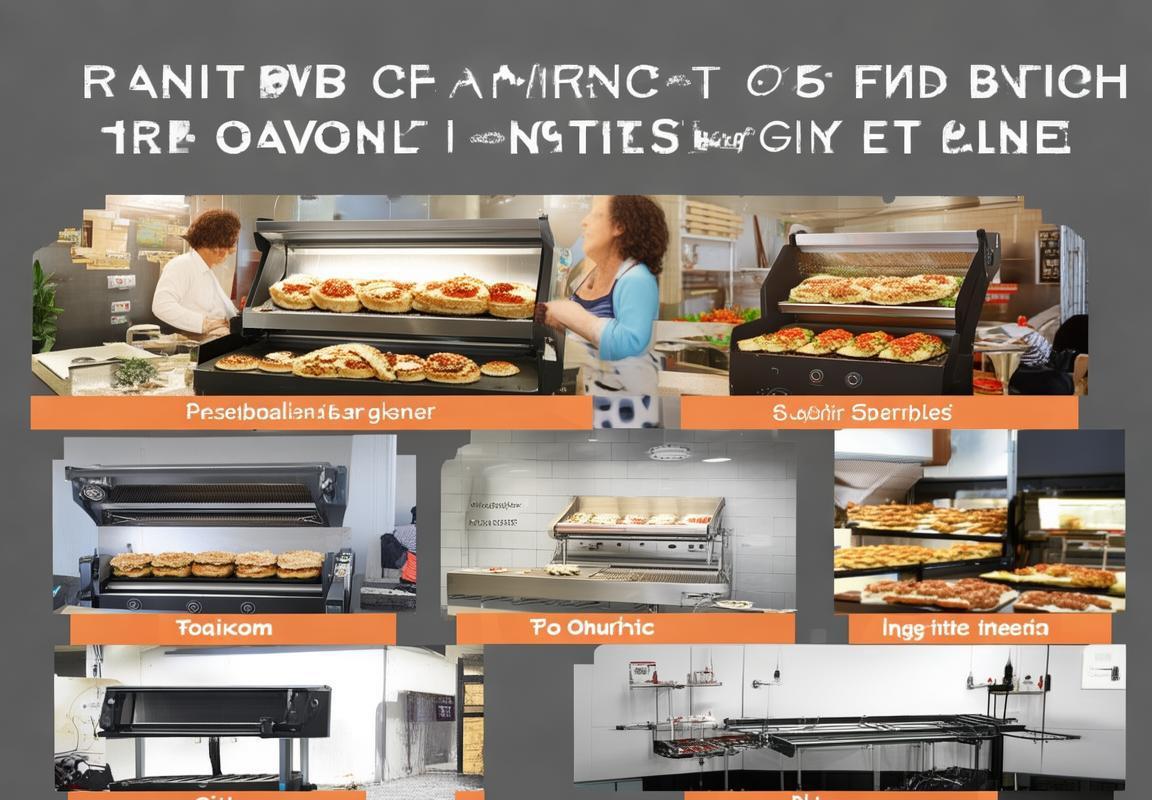
CompetitiveLandscape
In the competitive landscape of the sandwich grill market, several key players have emerged, each with their unique strengths and strategies. Here’s a glimpse into the dynamics that shape this competitive environment.
The giants of the industry, such as Breville and Hamilton Beach, have established themselves as household names. Their extensive product lines cater to a wide range of consumer needs, from home use to commercial settings. Their marketing prowess and brand recognition give them a significant edge over smaller competitors.
On the other hand, niche players like George Foreman have carved out a niche with their specialized products. Known for their grills, these brands often target health-conscious consumers who seek a healthier alternative to traditional cooking methods. Their focus on innovation and marketing campaigns that emphasize health benefits have helped them maintain a loyal customer base.
The rise of online retailers has also influenced the competitive landscape. Amazon, in particular, has become a major player, offering a vast selection of sandwich grills and related accessories. This convenience has allowed smaller brands to reach a broader audience, though it has also intensified price competition.
Distributors and retailers play a crucial role in the market, as they often influence consumer purchasing decisions. Large retailers like Walmart and Target have the power to drive sales of certain brands by featuring them prominently in their stores. Their buying power can sway the market dynamics, and brands must often negotiate favorable terms to secure shelf space.
The emergence of smart appliances has introduced a new layer of competition. Companies like Cuisinart and Breville have integrated technology into their sandwich grills, offering features like Bluetooth connectivity and smart cooking modes. This technological integration has allowed them to compete with brands that specialize in kitchen appliances, blurring the lines between different product categories.
International brands have also entered the market, bringing with them a global perspective and sometimes a higher price point. These brands often cater to the premium segment of the market, offering high-quality materials and advanced features. Their entry has increased competition and raised the bar for innovation and quality.
Innovation is a constant in the sandwich grill market. New materials, such as non-stick coatings and high-quality stainless steel, are being used to improve durability and ease of cleaning. Additionally, features like adjustable temperature settings and programmable cooking times are becoming standard, enhancing user experience and convenience.
Another factor influencing the competitive landscape is the frequency of product updates and releases. Brands that are able to keep pace with consumer demands and technological advancements often gain a competitive advantage. The ability to quickly adapt to market trends and consumer feedback is crucial for staying relevant.
Finally, the sustainability movement has started to impact the competitive landscape. Brands that incorporate environmentally friendly materials and manufacturing processes are gaining market share among eco-conscious consumers. This trend is likely to grow as consumers become more aware of the environmental impact of their purchases.
In summary, the competitive landscape of the sandwich grill market is shaped by a diverse array of players, each with their own strategies and strengths. From established giants to niche brands and international players, the market is dynamic and constantly evolving. Brands that can innovate, adapt, and maintain a strong market presence will continue to thrive in this competitive environment.
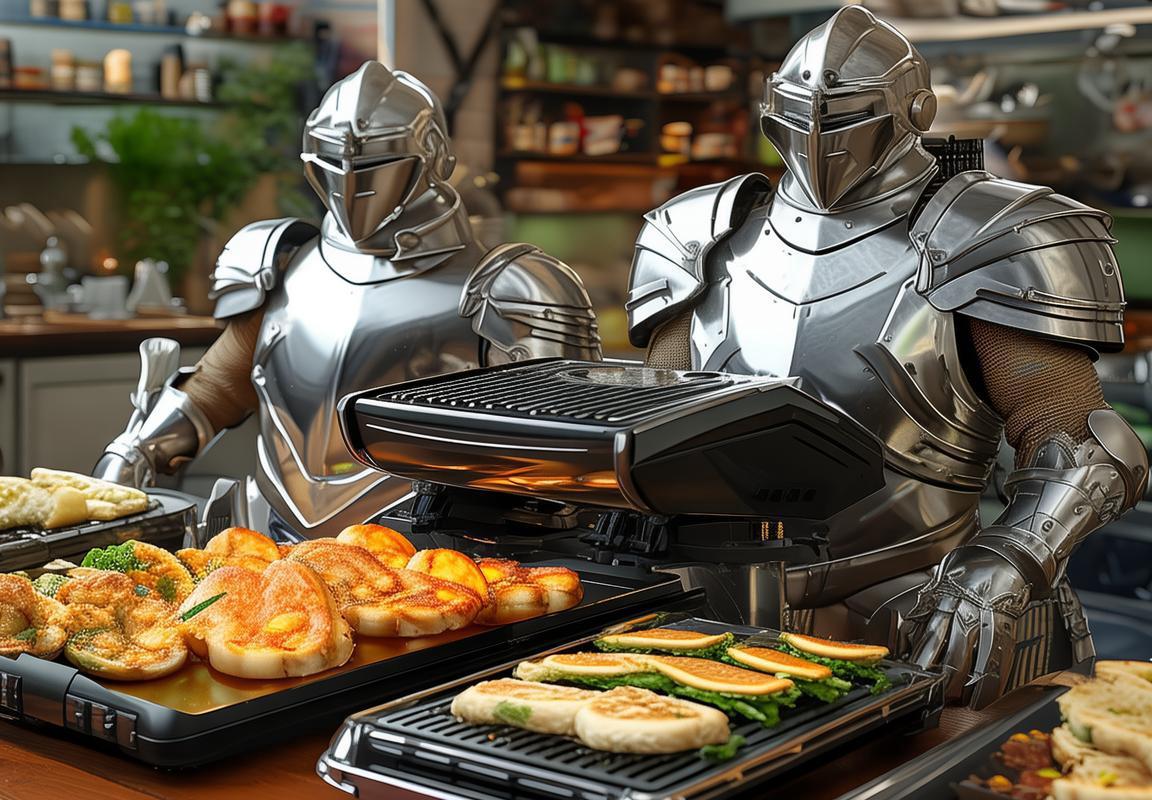
RegulatoryEnvironment
The regulatory environment surrounding the sandwich grill industry in both Europe and the Americas is a complex tapestry of local, regional, and international laws and standards. These regulations are designed to ensure product safety, environmental protection, and fair business practices. Here’s a detailed look at the key aspects of this regulatory environment:
Manufacturers must comply with stringent safety standards to protect consumers from potential hazards. This includes electrical safety, fire prevention, and mechanical integrity. In Europe, for instance, the Low Voltage Directive (LVD) and the General Product Safety Directive (GPSD) govern the safety of electrical and mechanical products, respectively.
Environmental regulations are crucial in the sandwich grill sector, as these appliances often consume significant amounts of energy and produce heat. In Europe, the Energy-related Products (ErP) Directive sets energy efficiency requirements for appliances, promoting sustainability and reducing carbon footprints. Similarly, the Waste Electrical and Electronic Equipment (WEEE) Directive and the Restriction of Hazardous Substances (RoHS) Directive aim to manage the disposal of electronics and limit the use of hazardous materials.
Food safety is paramount in the foodservice industry, and sandwich grills are no exception. Regulations like the Food Safety Act in the United States and the Food Hygiene Regulations in Europe dictate the cleanliness, handling, and storage of food products. These regulations also ensure that sandwich grill equipment is designed to prevent cross-contamination and maintain food quality.
Consumer rights are protected by various laws that govern product warranties and customer service. In the EU, the Consumer Rights Directive provides consumers with a set of rights, including the right to withdraw from a purchase within a certain timeframe. In the U.S., the Magnuson-Moss Warranty Act offers similar protections.
Intellectual property laws are vital for protecting the innovations and branding of sandwich grill manufacturers. The European Union Intellectual Property Office (EUIPO) and the United States Patent and Trademark Office (USPTO) provide platforms for registering patents, trademarks, and designs.
Trade agreements and tariffs can significantly impact the sandwich grill industry. The EU’s trade deals with countries around the world can open up new markets while imposing certain conditions. In the U.S., trade policies can influence the cost of importing and exporting equipment, affecting the overall pricing and availability of products.
Labor laws also play a role in the sandwich grill industry, particularly in the manufacturing and service sectors. These laws dictate working conditions, minimum wage, and employee rights. Compliance with these laws is essential for maintaining a legal and ethical business operation.
Privacy laws are increasingly important, especially with the advent of smart kitchen appliances that may collect and process personal data. The General Data Protection Regulation (GDPR) in Europe and the California Consumer Privacy Act (CCPA) in the U.S. are just two examples of regulations that require companies to protect consumer data.
Certification and labeling requirements are another aspect of the regulatory environment. In Europe, CE marking is a mandatory conformity marking for products sold within the European Economic Area. In the U.S., the Food and Drug Administration (FDA) regulates labeling for foodservice equipment to ensure accurate information is provided to consumers.
Lastly, there are industry-specific regulations that may apply to the sandwich grill industry, such as those related to foodservice operations, health codes, and sanitation standards. These regulations can vary greatly from one region to another and require continuous monitoring and adaptation by manufacturers and distributors.
Navigating the regulatory environment is a challenge, but it is an essential part of doing business in the sandwich grill industry. By staying informed and compliant, companies can mitigate risks, build trust with customers, and contribute to a sustainable and ethical market.
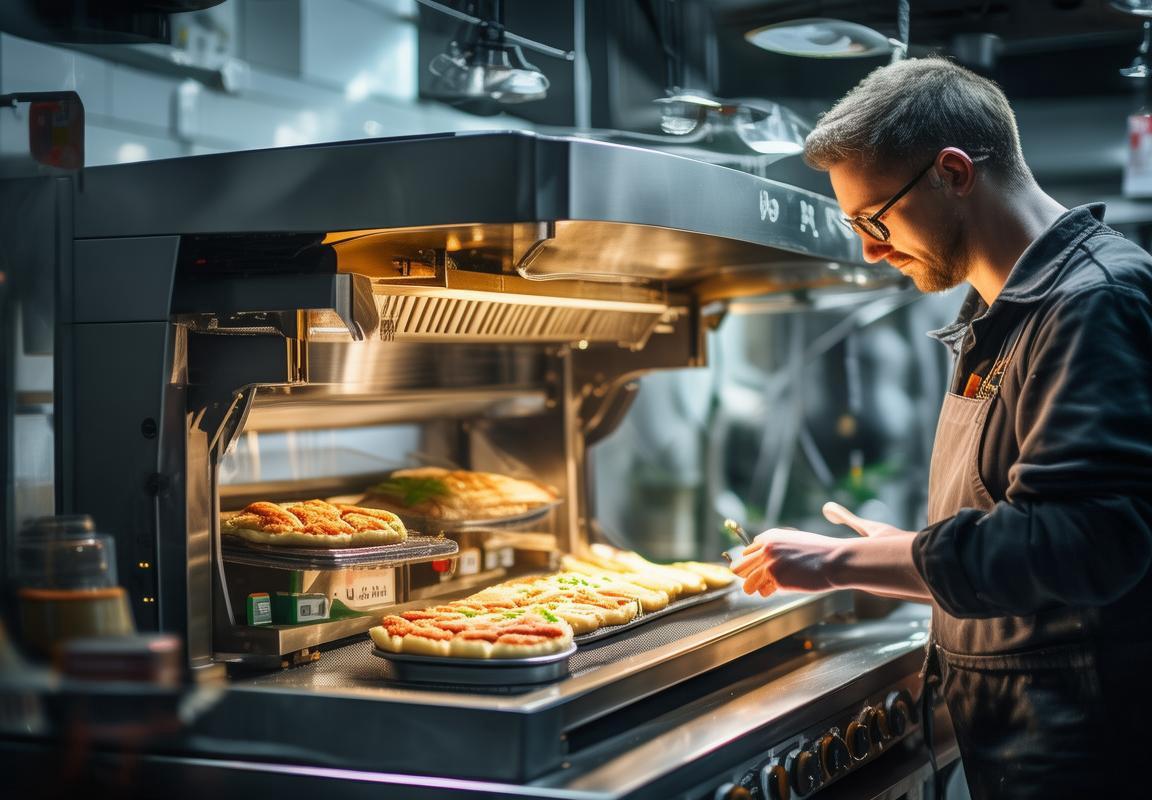
ConsumerBehavior
Consumer Behavior in the Sandwich Grill Market
In the realm of sandwich grill plants, consumer behavior plays a pivotal role in shaping the market landscape. Understanding these behaviors is crucial for companies looking to innovate, market effectively, and meet the demands of their target audience. Here’s a glimpse into the intricate patterns of consumer behavior within this niche market.
Shifting PreferencesConsumers today are increasingly health-conscious, and this trend is reflected in their choice of food. The sandwich grill market has seen a surge in demand for healthier options, leading to the popularity of plant-based and low-carb sandwiches. Consumers are not just looking for a quick meal; they’re seeking nutritious and convenient solutions that align with their dietary preferences.
Tech-Savvy ChoicesThe rise of technology has significantly influenced consumer behavior in the sandwich grill market. Many consumers are now using digital platforms to discover new sandwich varieties, read reviews, and even order directly from their smartphones. This tech-savvy approach allows consumers to explore a wider range of options and make informed decisions based on real-time information.
Personalization and CustomizationCustomization has become a major driver in the sandwich grill market. Consumers are looking for the ability to tailor their sandwiches to their specific tastes and dietary needs. This has led to a proliferation of specialty shops offering a wide array of toppings, bread choices, and protein options. The convenience of being able to create a personalized sandwich is a significant draw for many consumers.
Sustainability MattersEnvironmental consciousness is on the rise, and this extends to the food industry. Consumers are more likely to support brands that demonstrate a commitment to sustainability. In the sandwich grill market, this means using eco-friendly packaging, sourcing ingredients from local producers, and reducing energy consumption. Sustainability initiatives are not just a marketing tactic; they are becoming a crucial factor in consumer decision-making.
Value Over PriceWhile price is always a consideration, consumers in the sandwich grill market are increasingly valuing quality and value over the lowest cost. They are willing to pay a premium for fresh, high-quality ingredients and a unique dining experience. This shift indicates that consumers are looking for more than just a meal; they are seeking an experience that justifies their investment.
Health and Safety ConcernsHealth and safety are paramount in the food industry, and consumers are no exception. There is a growing demand for clear, transparent information about the ingredients used in sandwich grill products. This includes understanding the sourcing of meats, the presence of additives, and any potential allergens. Consumers are more likely to trust brands that prioritize health and safety, leading to increased loyalty.
Community and Brand LoyaltyConsumers often develop a sense of loyalty to brands that align with their values and community interests. In the sandwich grill market, this could mean supporting local businesses, participating in community events, or engaging with the brand on social media. The sense of community and connection with a brand can significantly influence purchasing decisions.
Convenience and AccessibilityConvenience remains a key driver in consumer behavior. With busy lifestyles, consumers seek products that are easy to access and can be consumed on-the-go. The sandwich grill market has responded by offering grab-and-go options, drive-thru services, and mobile apps that allow for easy ordering and delivery. The emphasis on convenience is a strategy that resonates with today’s consumers.
Evolving Food FadsThe sandwich grill market is not immune to food trends. Consumers are constantly seeking the next big thing, whether it’s a new flavor, a trendy ingredient, or a unique preparation method. Keeping up with these fads can be challenging for brands, but it’s essential for staying relevant and appealing to the dynamic consumer base.
In conclusion, consumer behavior in the sandwich grill market is complex and multifaceted. It encompasses health consciousness, technological adoption, personalization, sustainability, value, safety, community, convenience, and the influence of food trends. Brands that understand and adapt to these behaviors are best positioned to succeed in this competitive and ever-evolving industry.

FutureOutlook
In the evolving landscape of the sandwich grill industry, several key trends are shaping the future outlook. From the rise of health-conscious consumers to the integration of smart technology, the market is poised for significant transformations.
The growing demand for convenience and efficiency in fast-paced lifestyles is driving the adoption of advanced sandwich grill systems. These systems not only cater to the quick-service restaurant (QSR) sector but also to home kitchens, as consumers seek to replicate the convenience of dining out at home.
Sustainability is becoming a crucial factor in the future of sandwich grill technology. As environmental concerns escalate, manufacturers are focusing on energy-efficient designs and eco-friendly materials. This shift is not only beneficial for the planet but also resonates with consumers who are increasingly looking for sustainable options.
Smart grills equipped with IoT (Internet of Things) capabilities are expected to gain traction. These smart grills can offer real-time monitoring, predictive maintenance, and even personalized cooking settings based on user preferences. The integration of AI (Artificial Intelligence) could further enhance the user experience, providing data-driven insights into cooking times and temperatures.
The market is witnessing a surge in innovation, with new features like adjustable heat zones and non-stick surfaces becoming standard. These advancements not only improve the quality of the sandwiches but also reduce the need for constant cleaning and maintenance, appealing to both commercial operators and home users.
Health and wellness trends are influencing the design and functionality of sandwich grills. There’s a growing interest in grills that can accommodate a variety of ingredients, from lean proteins to whole grains, allowing for healthier sandwich options. The ability to control cooking temperatures and times ensures that food is cooked to perfection without the addition of excess fats or preservatives.
As the sandwich market continues to diversify, there’s an increasing demand for specialized grills that cater to niche markets. This includes grills designed for vegan and vegetarian sandwiches, as well as those tailored to specific dietary requirements like gluten-free or low-carb options. The customization of these grills allows for a more inclusive approach to foodservice.
The rise of mobile food trucks and pop-up restaurants is also impacting the sandwich grill market. These dynamic operators require portable, robust, and easy-to-use grills that can be quickly set up and transported. The demand for such grills is likely to grow as the mobile food industry expands.
The global pandemic has accelerated the shift towards contactless and touchless technology in the foodservice industry. In the future, sandwich grill systems may incorporate touchless controls and sensors to reduce the risk of cross-contamination, ensuring the safety of both staff and customers.
Collaborations between grill manufacturers and foodservice providers are becoming more common. These partnerships are focused on creating custom solutions that meet the specific needs of individual businesses, from high-volume fast-food chains to boutique cafes. This trend is likely to continue as businesses seek to differentiate themselves in a competitive market.
In conclusion, the future of the sandwich grill market is marked by a blend of technological innovation, health consciousness, sustainability, and customization. As consumer preferences and market dynamics continue to evolve, the industry will need to adapt to stay ahead of the curve. Whether it’s through smart technology, health-focused features, or eco-friendly designs, the sandwich grill market is set for a dynamic and innovative future.